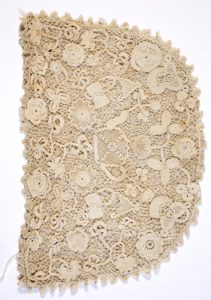Linen in Monaghan County Museum
This online exhibition of artefacts in our collection portrays the importance of the linen trade in county Monaghan. The linen making process was a labour-intensive process that particularly suited the small size of farms in county Monaghan. The weaver-farmer system was very common until the 1830s, when spinning mills were becoming established and the spinning of linen thread at home slowly declined.
Flax Drag
3-pronged cast iron drag (handle missing) used for removing drowned flax from flax holes when retting flax
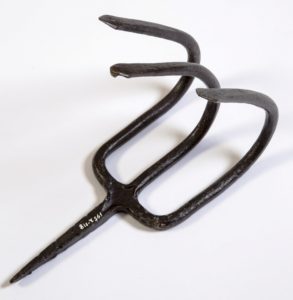
Scutching Blade
Flat thin wooden blade of sub-rectangular shape used for removing dried wood from flax.
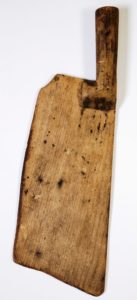
Scutching Mill
Traditionally powered by water and sometimes steam. They separated tow from flax, tow was used for ropemaking. This is where the term tow rope comes from.
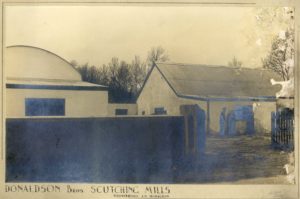
Raw flax
Piece of raw flax for linen making
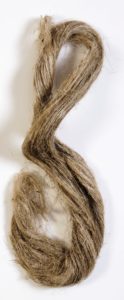
Branding Iron
The number 12 is the ward number, the brand was dipped in red lead and printed on clothing, bedlinen and towels for patients to keep supplies for each ward separate.
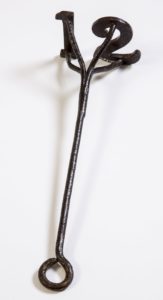
Lease of Monaghan Militia Barracks
Legal document – Lease W. Henry Earl of Clermont to Commissioners of Barracks dated 1791 which also includes a map.
When the Linen Board granted looms to men serving in the Militia regiments in Ireland, the county Monaghan regiment got a total of 110 looms. These were distributed by the Colonel of the Regiment, Colonel Leslie of Glaslough. The development of many towns in the county was based on the success of the linen markets and the trading hubs that developed as a result.
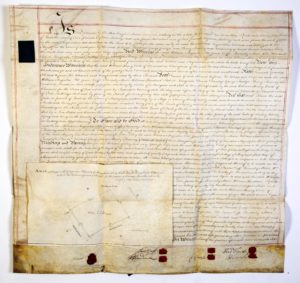
Map of Monaghan Militia Barracks
Legal document – Lease W. Henry Earl of Clermont to Commissioners of Barracks dated 1791 which also includes a map.
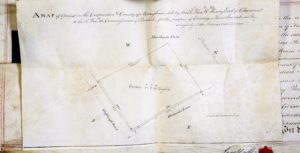
Historic Ordnance Survey of Ireland Maps
Set of First Edition 6″ sheets, Ordnance Survey of Ireland. Linen backed maps in a leather-bound volume.
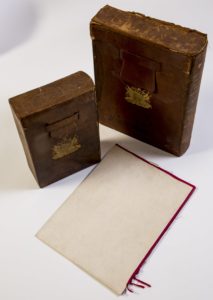
Index to Register of Births
Printed on linen as it was hard-wearing.
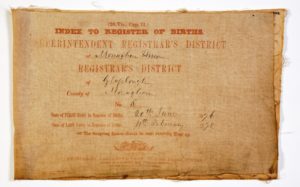
Great Northern Railway Flags
Green, Red and Yellow they were used in the same manner as traffic lights are now. Drivers (exclusively male at that time) had to do a sight and colour blindness test prior to employment as it is more common for men to be colour blind.
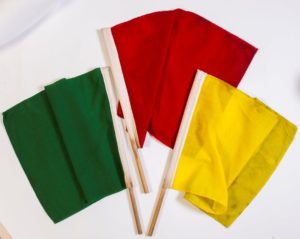
Union Jack
Flag, Union Jack, linen sections stitched together.
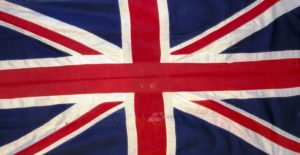
Uniform Tunic
Tunic, Royal Irish Fusiliers, red linen cloth, single-breasted, four brass buttons depicting eagle over number 8.
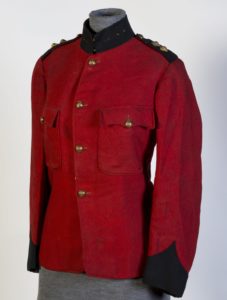
Sampler
Linen needlework sampler. A sampler is a piece of embroidery produced to showcase needlework skills. The name comes from the Latin word exemplum, meaning example. This sampler displays a combination of alphabets, decorative stitches and verses all in fine black cross stitches, there are also decorative birds, trees and coloured crowns, in an oval leaf frame. It is over two hundred years since Alicia Jones made this at Miss McConnel’s School, Monaghan on the 15th August 1814.
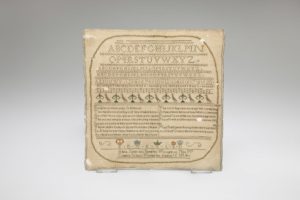
Fire screen
King William III, fire screen.
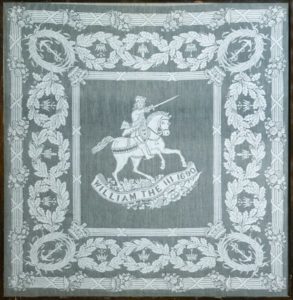
Linen Table Centre
Mary Coleman Collection
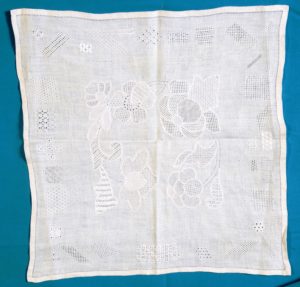
Apron
White linen apron. Top and pockets with pink embroidery, bottom embroidered with floral design.
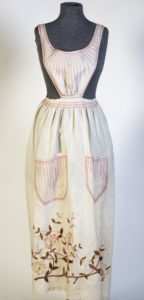
Belbroid Nightgown
Nightdress – Belbroid. Belonged to Donor’s mother. Dates to 1920’s.
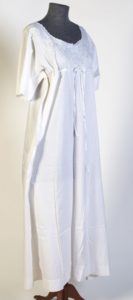
During World War One Lady Leonie Leslie went to Alexandra Palace in London to bring back a group of Belgian refugees who settled in Monaghan town in November 1914. Leonie was instrumental in arranging housing for these families in the area now known as Belgian Square. There is a neighbouring housing estate called Belgium Park. Lady Leslie later received the Queen Elisabeth medal from the Queen of Belgium in recognition of her kindness. The Belgian refugees were the first residents of Belgian Square where the houses were constructed utilising the existing disused Monaghan Militia barracks. The Belgian residents went on to set up a company called ‘The Belbroid’ that produced items of ladies clothing and undergarments from a mix of Belgian embroidery and linen.
Belbroid Stamp
Detail of the company logo.
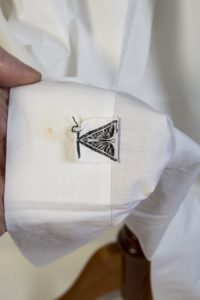
Clones Lace Sleeve
Sleeve of Clones crochet lace with crochet lace cuff made using linen thread displayed on a dark velvet sleeve. The donor was Maggie Murray an expert lace maker from Clones.

Clones Lace Tea Cosy
Tea cosy of Clones crochet lace made using linen thread. Motifs include a teapot, shamrocks and roses. Given to donor on her wedding in 1930, the donor was Maggie Murray.
